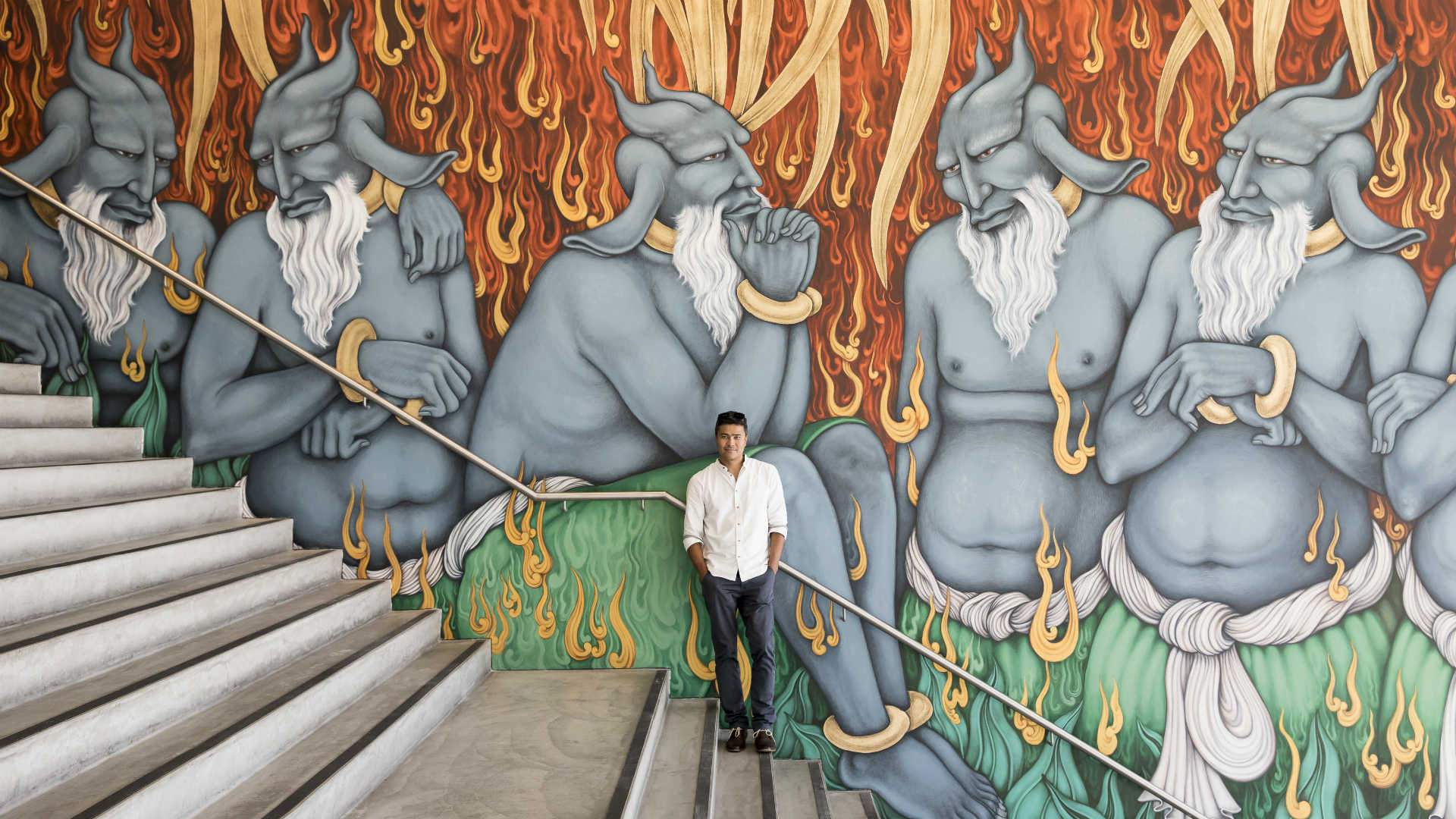Ten Highlights of The National, Sydney's New Citywide Blockbuster Exhibition
Find neon caves, giant, glowing phalluses and large-scale demon murals lurking inside the Art Gallery of NSW, MCA and Carriageworks.
Sydney's due for a new blockbuster exhibition, having farewelled Tatsuo Miyajima and Nude weeks ago. Weeks. We're a little demanding. Things have been a little too quiet on the large-scale institutional exhibition front. But we're ready for some solid gallery hopping, and considering this is an off-Biennale year, we're lucky an ambitious new citywide exhibition has just landed in Sydney.
The Art Gallery of NSW, Carriageworks and the MCA have joined forces to bring you a new, whizzbang multi-space exhibition. Titled The National: New Australian Art, it showcases works by 48 contemporary Australian artists who range from emerging to mid-career to established. The first edition opens on March 30, with the second and third to follow in 2019 and 2021. Prepare to meet installations, performances, sculptures, videos, paintings and drawings that express perspectives on Australia you probably haven't considered before. Here, we take a look at ten highlights.
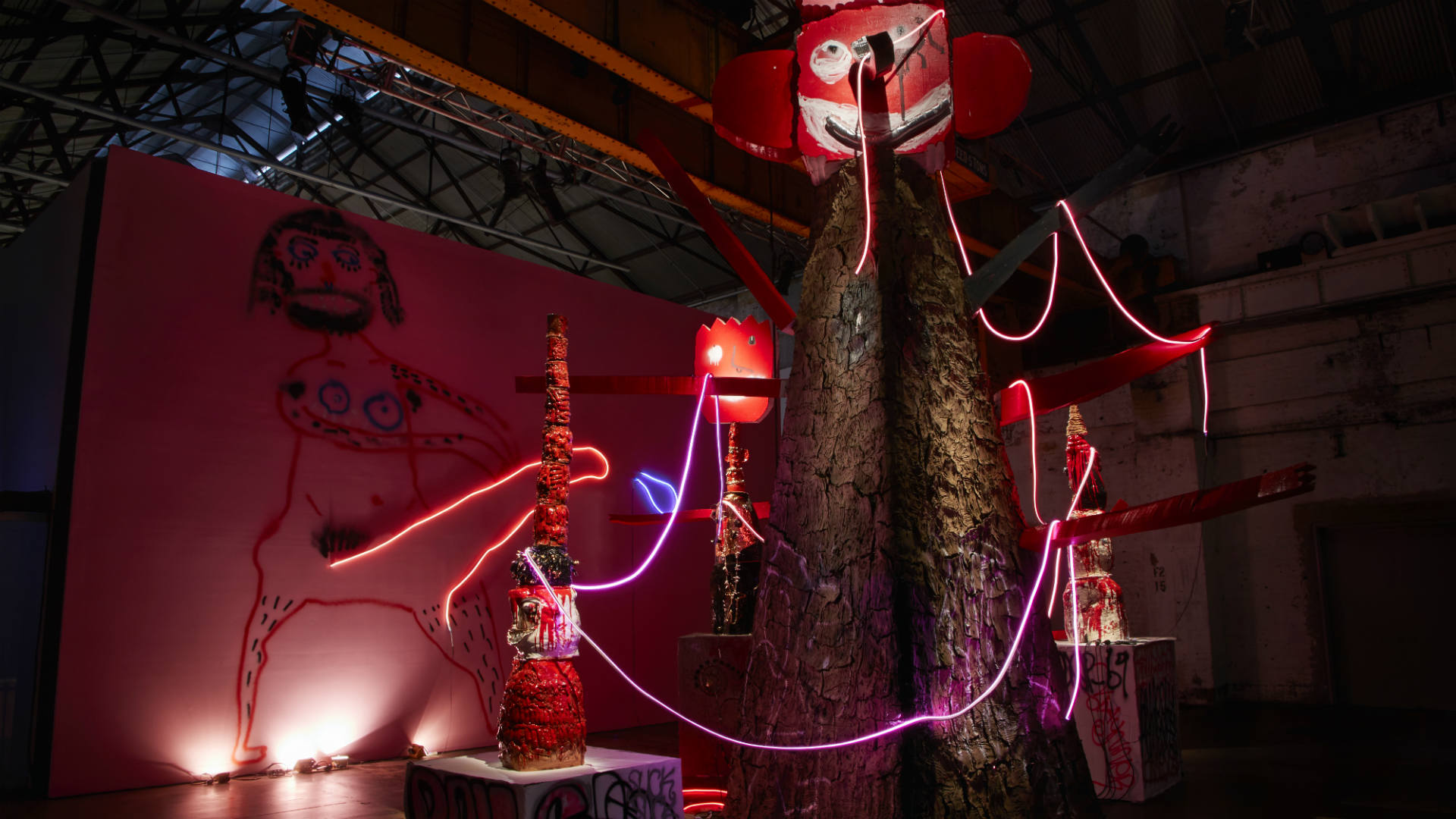
Ramesh Mario Nithiyendran, The Cave (2016-17). Installation view, The National 2017, Carriageworks. Photograph: Zan Wimberley.
THE CAVE BY RAMESH MARIO NITHIYENDRAN, CARRIAGEWORKS
Ramesh Mario Nithiyendran's The Cave is not for the faint-hearted. Like all caves, it promises magic and mystery and, in this case, prepare to be greeted by a giant, glowing phallus. It's the backdrop for sculptures made of all kinds of weird and wonderful materials — from chicken wire and painted polystyrene to Indian human hair, dentures, rubber snakes, rubber horses and shells. The experience might have you running away and sleeping overnight in a cave of your own.
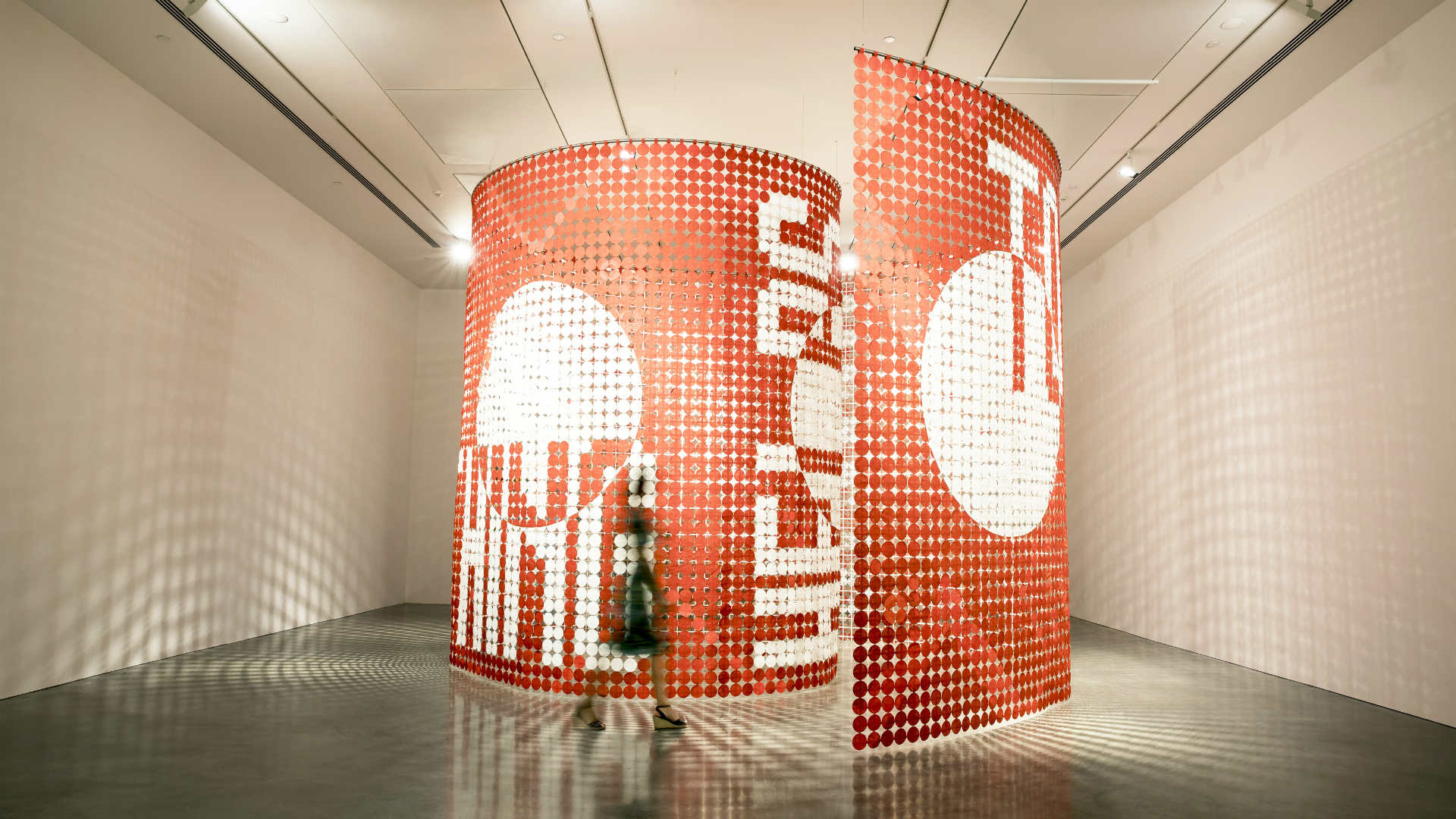
Rose Nolan, Big Words – To keep going, breathing helps (circle work) (2016–17). Installation view, The National 2017: New Australian Art, Museum of Contemporary Art Australia, Sydney. Image courtesy the artist and Anna Schwartz Gallery © the artist. Photograph: Ken Leanfore.
BIG WORDS — TO KEEP GOING, BREATHING HELPS BY ROSE NOLAN, MCA
Most artists are a bit obsessed with space. If it's not the space within their work they're worrying about, it's the space outside — whether the piece is headed for a gallery or a non-traditional spot. Rose Nolan's Big Words - To keep going, breathing helps, a massive curtain made of red and white hessian discs and arranged in a spiral, invites you in. Walk around it, walk through it, walk forwards, walk backwards — from every angle you'll a new perspective.
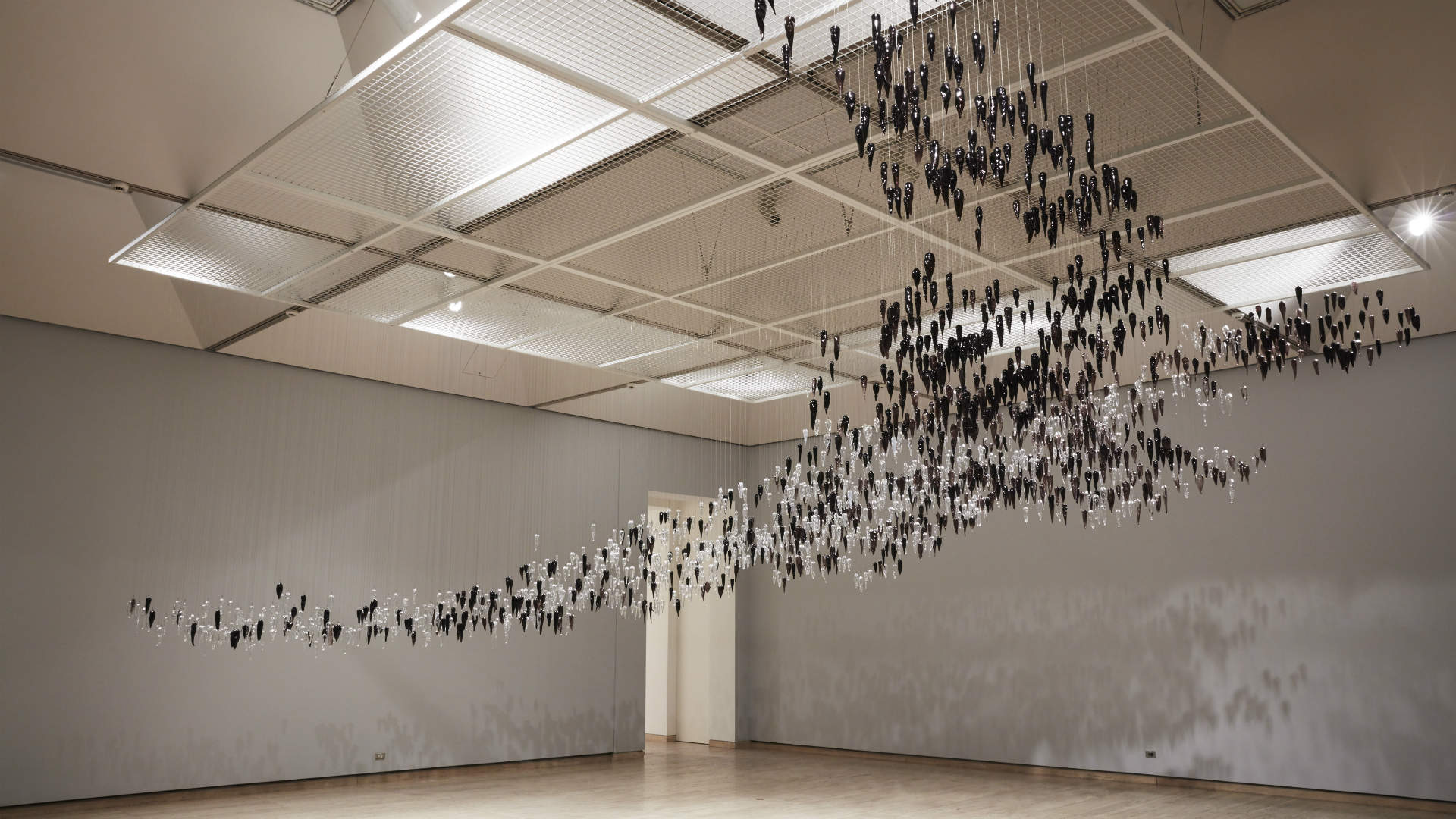
Yhonnie Scarce, Death Zephyr (2017). Courtesy the artist, Melbourne and THIS IS NO FANTASY + dianne tanzer gallery, Melbourne © Yhonnie Scarce.
DEATH ZEPHYR BY YHONNIE SCARCE, AGNSW
This dramatic installation immerses you in a dispersing atomic cloud, made up of hundreds of hand-blown glass tear drops. These are the work of Yhonnie Scarce, a Woomera-born, Melbourne-based artist of Kokatha and Nukunu heritage, whose art explores the impacts of politics and events on Indigenous communities. Death Zephyr is a response to the British nuclear testing that devastated Maralinga and nearby areas in the '50s and '60s.

Khadim Ali, The Arrival of Demons (2017). Installation view, The National 2017: New Australian Art, Museum of Contemporary Art Australia, Sydney, commissioned by the Museum of Contemporary Art Australia, 2016, supported by Veolia Environmental Services. Image courtesy the artist and Milani Gallery © the artist. Phototograph: Ken Leanfore.
THE ARRIVAL OF DEMONS BY KHADIM ALI, MCA
You can't miss The Arrival of Demons. Seriously, its 15 x 7 metres of demonic gloriousness have taken over the entire wall of the multi-levelled MCA foyer. Pakistan-born, Sydney-based artist Khadim Ali is preoccupied with demons and this particular bunch is from a Shahnama/The Book of Kings, a 10th-century epic poem, which Ali's grandfather read to him when he was a kid. The mural is a reference to the waiting process endured by asylum seekers who arrive in Australia.
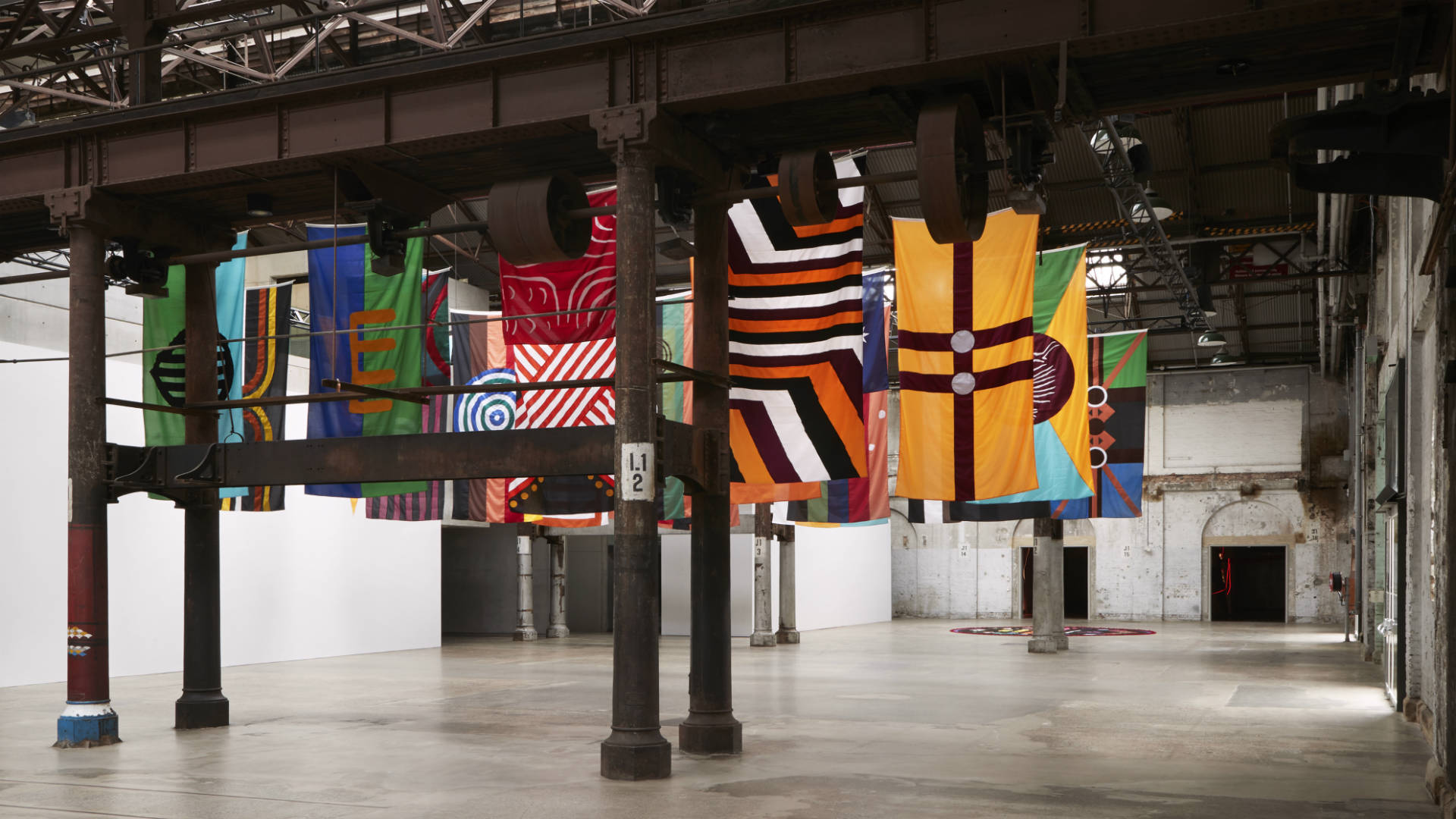
Archie Moore, United Neytions (2014-17). Installation view, The National 2017, Carriageworks. Image: Zan Wimberley.
UNITED NEYTIONS BY ARCHIE MOORE, CARRIAGEWORKS
This uplifting collection of artworks masquerading as flags fills the entrance to Carriageworks' branch of The National with colour and vibrancy. With it, Archie Moore, a man of Kamilaroi heritage, defies the colonial idea that Australia's Aboriginal people were 'nomads' without any attachment to land or place. The flags represent 28 Aboriginal nations, as laid out in an important yet flawed map, by anthropologist R.H. Mathews. Each design is inspired by local flora and fauna.

Gordon Bennett, artworks from Home Decor (after M. Preston) (2012), © Gordon Bennett.
HOME DECOR (AFTER M. PRESTON) #14, GORDON BENNETT, MCA
When Gordon Bennett died in 2014, Australia lost one of its most important artists. This series of bold, abstract paintings, completed in 2012, was his final work. It challenges Margaret Preston's appropriation of Aboriginal designs for home decor in the 1920s, through the reappropriation and transformation of them into stunning, formalist art. Bennett was committed to exploring the postcolonial experience and confronting racist stereotypes at all levels of culture and society.
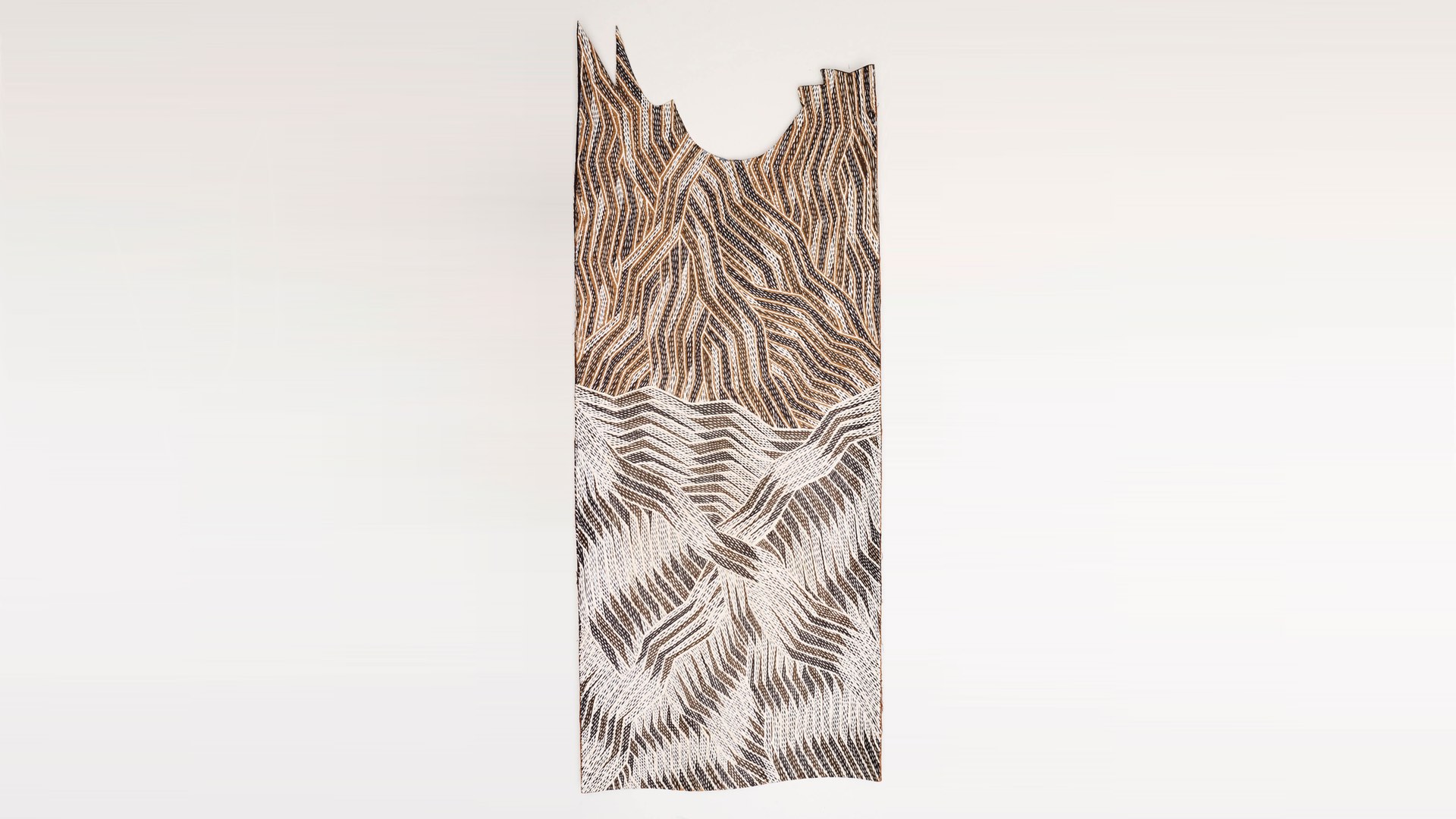
Gunybi Ganambarr, Coastline of Grindall Bay (2016). Image courtesy the artist and Buku-Larrŋgay Mulka Centre © the artist.
BUYKU AND GAPU BY GUNYBI GANAMBARR, AGNSW
Walking among Gunybi Ganambarr's pieces, you experience a powerful sense of his Country — northeast Arnhem Land, where he works in the tiny community of Gängan. The centrepiece is a series of larrakitj (memorial poles), featuring miny'tji (sacred clan patterns). Their timber, earthy colours and natural textures contrast with the surrounding pieces, which are made of bits and pieces salvaged from mining and construction sites. One, titled Gapu, which is based on rubber from a conveyor belt but marked with miny'tji, is a symbol of conflicts over land rights.

Taloi Havini, Habitat, still, detail (2017). Image courtesy the artist and Andrew Baker Art Dealer © the artist. Image: Nicole Foreshew.
HABITAT BY TALOI HAVINI, AGNSW
For ten minutes and 40 seconds, this mesmerising video installation carries you to Papua New Guinea's Panguna copper mine. Opened in 1972 by Bougainville Copper Limited, a subsidiary of Aussie company Conzinc Rio Tinto, the mine triggered a decade-long civil war between land owners and the PNG Defence Force, leaving 20,000 dead. Taloi Havini contrasts bird's eye views of poisoned waterways with those of healthy, tropical vegetation, and brings you close-up shots of the locals' experience: prospecting for gold and cooking in a toxic environment.

Richard Lewer, Never Shall Be Forgotten — A Mother's Story (still, detail) 2017. Image courtesy the artist, Sullivan+Strumpf and Hugo Michell Gallery © the artist.
NEVER SHALL BE FORGOTTEN — A MOTHER'S STORY BY RICHARD LEWER, CARRIAGEWORKS
In 1983, John Pat, a 16-year-old Yindjabarndi man, died in police custody in Roebourne, Western Australia. He had been caught in a brawl outside the Victoria Hotel involving five off-duty officers and, despite the autopsy revealing that John had received ten blows to the head, the officers were acquitted three weeks later by an all-white jury. In this moving video installation, New Zealand-born, Melbourne-based artist Richard Lewer tells John's story through the eyes of his mother, Mavis Pat, drawing on a combination of hand-drawn animation, high-definition video and stereo sound.
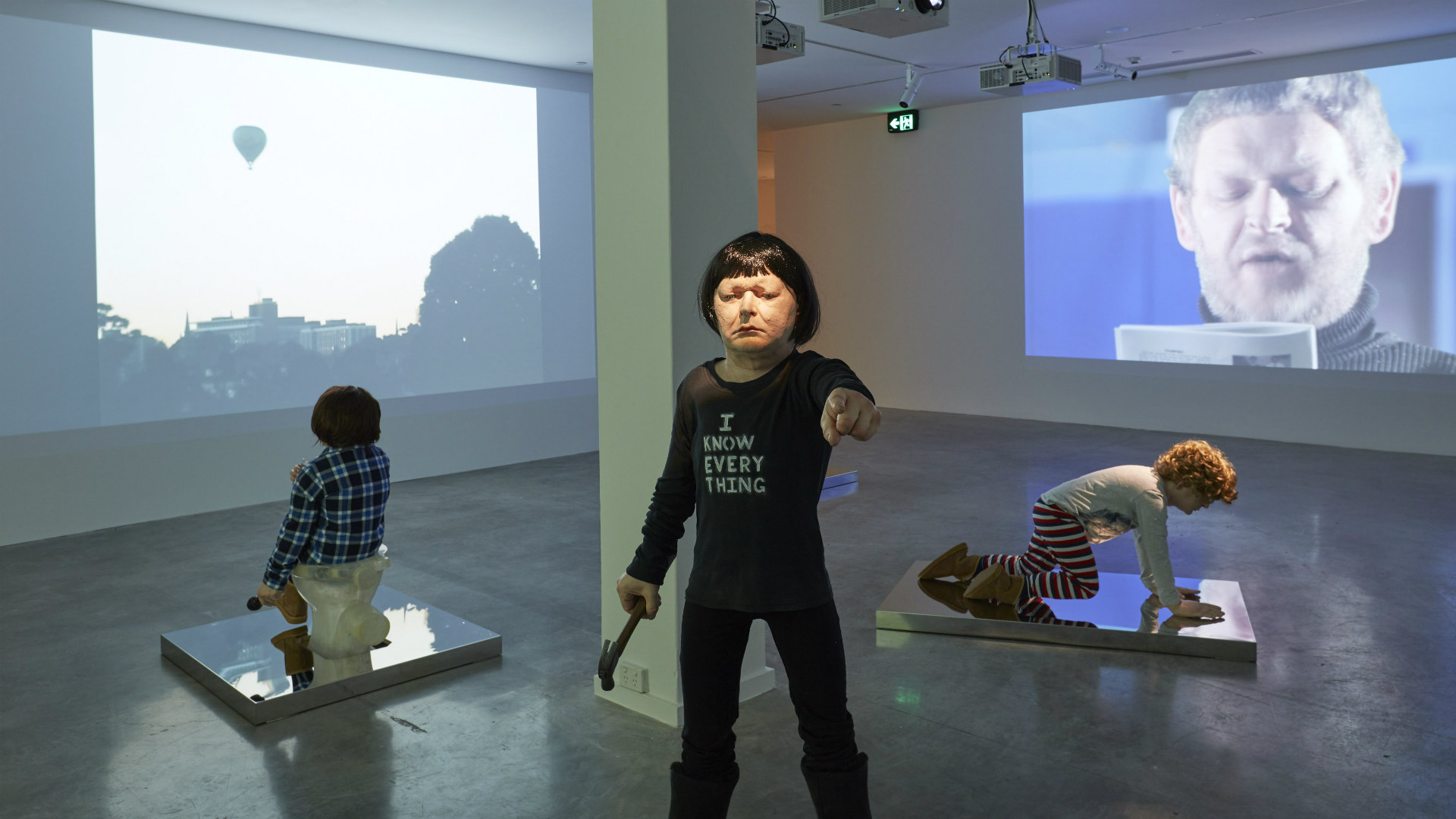
Ronnie van Hout, I know everything (detail) (2017). Installation view, The National 2017: New Australian Art, Museum of Contemporary Art Australia, Sydney. Image courtesy the artist, Darren Knight Gallery and STATION Gallery © the artist. Photograph: Felicity Jenkins.
I KNOW EVERYTHING BY RONNIE VAN HOUT, MCA
When you first walk into I Know Everything, you feel like you're entering a fun day care centre. After all, you're surrounded by life like, 3D sculptures of kids playing. But, look closer and you'll notice that their faces are too old for their bodies. And they all resemble one person: artist Ronnie Van Hout. This dynamic, unsettling work challenges traditional notions of self-portraiture.
The National is showing at Art Gallery of NSW from 30 March-16 July, at Carriageworks from 30 March-25 June and at the MCA from 30 March-18 June.
Starting with Carriageworks? Don't miss these five things to see there alone.
Top image: Khadim Ali, standing in front of his work, The Arrival of Demons (2017). Installation view, The National 2017: New Australian Art, Museum of Contemporary Art Australia, Sydney, commissioned by the Museum of Contemporary Art Australia, 2016, supported by Veolia Environmental Services. Image courtesy the artist and Milani Gallery © the artist. Phototograph: Ken Leanfore.
